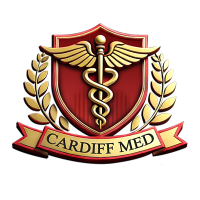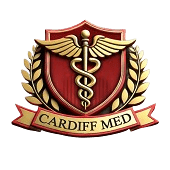In his latest blog, Elliott Campbell MD, Dermatology Resident at Mayo Clinic, Pastest question writer and high-scoring candidate, discusses the resources, the utilization of resources and must review concepts in relation to the Neurology section of the USMLE Step 1 exam.
Neurology is a Step 1 favourite. This content allows for easily written questions, from lesion identification to gross anatomy. There is a unique anatomic-pathologic correlation which is highly testable. For this reason, it is important to be able to visualize pathways in the context of gross anatomy. A unique strategy is required to learn this content. This article will focus on which resources are required and how to properly utilize these resources. At the end, must-know concepts are discussed.
What are the Best Resources for USMLE Neurology?
The section in First Aid for Step 1 is a very valuable resource and has helpful mnemonics. A well-designed USMLE Step 1 question bank is essential, as discussed below. This is one section that mandates additional resources to master. My recommendation is to see as many gross anatomy images and neuroanatomy figures as possible. For this, I recommend Google searches (more on this below). If you have a neuroanatomy textbook, this can be a helpful resource; however, I have found that focused Google searches are easier to use.
How do I Learn USMLE Neurology Content?
Like many other sections, start off with a well-designed question bank before you dive into First Aid. I recommend the annotation approach for this section (see below). What is different about this section is the need for visualization. You will either see images of gross anatomy/figures with anatomy or you will be required to visualize pathways. This is the only section where I recommend frequent Google searches for images. For instance, if you are learning about a lesion in the basal ganglia, you can search for diagrams and gross anatomy photographs which show three-dimensional images in different cross sections. You will encounter these types of images on Step 1. You should also look at imaging of these areas (CT and MRI). When specific pathologies come up, you can see how they look. Using this tactic, you will train your brain to build a three-dimensional diagram of the brain that you can use to tackle any question that comes your way. There are also several images that you can use online which allow you to quiz yourself on this anatomy. Although First Aid and question banks are thorough, they are unable to contain these vast number of images which are critical for understanding.
How Do I Use the “Annotation Approach” for USMLE Step 1?
This is what I used for my Step 1 (for all sections) and has been used by many of my colleagues and mentees with great success. See the linked article for a general approach to the Step 1 curriculum. In this approach, questions are completed in tutor mode, untimed, and within categories (not on random mode). After each question, the content is reviewed in First Aid. If content is missing in First Aid that was included in the question’s explanation, it should be quickly annotated into the book. I would recommend also having the online version handy to search for page numbers. Any memory devices should also be noted (“How do I remember this?”, or “Why does this make sense?”). If performing a second pass and all the annotations are complete, content with annotations should be reviewed again with each question. This results in a very organized framework. You will start to remember where content is located and which annotations were present. Regardless of whether you perform one or two passes through your question bank, learners should read their annotated section in First Aid all the way through at least once.
High Yield USMLE Step 1 Concepts
These are some of the most testable concepts; however, this only highlights some of the well-known, high-yield content in this section. If you are not very familiar with the below concepts, it would be advisable to master them before test day.
- Lesion identification – this comes in many forms. There may be a pin in a gross section which asks what deficits are present. There may be symptoms and then the anatomic location is required. This is where an excellent understanding of all the central nervous system’s anatomy and physiologic function is imperative. Radiographic images are also frequently displayed in many forms. Along with this, know your homunculus well. This is usually added on to make cortex lesions more challenging. Cross sections of the spine are bound to show up in a question.




